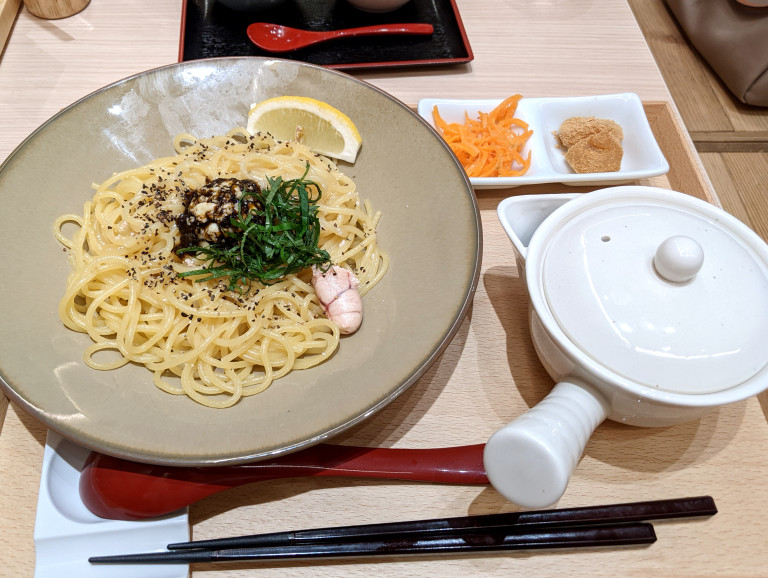
They exclusively serve fancy Japanese-style pasta dishes at this restaurant, and the tofu is made in-house!
One of our favorite restaurants, Kamakura Pasta (which we love for its all-you-can-eat homemade bread) just opened the first branch of a brand new line of restaurants called Odashimon in the northern Tokyo neighborhood of Kita-Senju, a popular residential area. Even though it’s different from Kamakura Pasta in that it focuses on Japanese-style pasta dishes, we heard it also offers all-you-can-eat options, so naturally, we had to go check it out.
As it turns out, what they offer for all-you-can-eat is not homemade bread, but actually homemade tofu! This piqued the interest of our Japanese-language reporter Mr. Sato, so he visited the new restaurant without delay.
Odashimon, which opened on July 7, is on the 9th floor of the Kita-Senju Marui department store, which also happens to be its restaurant floor. Though the name might inspire thoughts of Doraemon, Digimon, or even Pokémon, sadly there’s no affiliation.
Instead, Odashimon follows in the footsteps of Kamakura Pasta by specializing in the ingredients used in every dish. The menu incorporates some of the best products from around the country, including many even from Mr. Sato’s home prefecture of Shimane. For example, they use traditional soy sauce from a Shimane-based manufacturer called “Inoue Traditional Joyu Soy Sauce”, which uses a natural fermentation method.
▼ The ingredients that go into Odashimon’s signature dashi broth
The dashi they serve alongside the pasta is also an original recipe that’s made in-house with eight ingredients, including katsuo bonito flakes, mackerel, horse mackerel, and round herring. What’s more, every brothy pasta dish also comes with all-you-can-eat homemade tofu, whose soybeans are cultivated in different parts of Japan. The menu was obviously crafted with mindful use of high-quality local ingredients.
▼ Every brothy pasta dish also comes with a side of grated carrots and warabimochi.
There are four kinds of pasta dishes on the menu, which are differentiated based on the broth: Kakedashi, Tsukedashi, Okin Dashi, and Toridashi. Kakedashi comes with one of two sea bream-based broths served in a separate pot, to be poured over the pasta when you’re ready to eat. Tsukedashi, like tsukemen, comes with a rich broth on the side, in which you dip your pasta noodles. Okin Dashi is their signature eight-ingredient dashi, which the pasta arrives already dressed in. Lastly, Toridashi is also poured over the pasta before it’s served, though it’s made with rich chicken broth instead of standard fish-based dashi.
You can also choose between regular and large sizes, so you won’t go home hungry from this restaurant. Mr. Sato chose a regular “Puchi Puchi Tarako and Nori Butter Kakedashi Pasta” (1,419 yen [US$9.98]), which comes with “puchi puchi” (plump and juicy) cod roe and seaweed-flavored butter. For his broth, he decided on the one made from sea bream and Soda skipjack tuna.
With his order in, Mr. Sato headed not for the self-serve drink bar, which is a common accessory at Japanese restaurants, but for Odashimon’s original tofu bar. There were four different kinds of tofu stored in wooden tubs that day, but even though their names were listed on labels behind the tubs, Mr. Sato had no idea what each one was without lifting the lid and peeking inside.
He decided to start with what was called “Toyomasari”, which seemed to be a softer kind of tofu, and “Black Soy”, which was a gray color.
With tofu now in hand, he proceeded to the seasonings bar, where ginger, black pepper, grated daikon, traditional Joyu soy sauce, sesame oil, Hakata no Shio (a special salt made from a combination of Japanese sea salt and imported, sun-dried salt), and dried bonito shavings awaited. Obviously, customers have free rein to choose what they like. Mr. Sato chose to put bonito shavings, grated daikon, and ginger on his.
He’s actually a pretty big fan of tofu, and since you rarely ever get the chance to eat tofu made fresh from high-quality beans, he was pretty happy. Knowing his pasta was coming, he didn’t go up for seconds, but he could see someone who is a huge fan of tofu coming here just for that.
Soon his cod roe and seaweed butter pour-over pasta arrived, together with a pot of broth and a serving of grated carrots and warabimochi, a chewy type of mochi.
The pasta was dressed with butter and topped with seaweed, shredded shiso leaves, black pepper, and two clumps of cod roe.
The menu had recommended that he first try the pasta without the broth, so he dutifully mixed it up and took a bite. It was very rich! Mr. Sato had ordered this dish with the intention of enjoying the cod roe, but the strong flavor of seaweed greatly overpowered the flavor of the fish eggs. Even so, he wasn’t mad about it; he likes richly flavored foods. The delicious flavor of seaweed and butter filled every corner of his mouth, and he enjoyed how viscous and sticky the sauce was.
Since this dish was served with a pour-over broth, however, the sauce was most likely designed to be watered down, so Mr. Sato reluctantly poured the broth over the pasta and its rich sauce and gave it a good stir.
As expected, that toned the flavor down quite a lot. It was pretty good in that it added umami to the sauce and gave the flavor a certain depth, but Mr. Sato missed the richness of the undiluted sauce. He almost wished there was an option to order the pasta without the broth since it had been delicious on its own.
Desserts–including beautiful matcha options–are also part of the flagship products of Odashimon, so Mr. Sato had to try one. Ever the contrarian, he decided on the most unusual option, the Soy Sauce Soft-serve Ice Cream (418 yen).
It didn’t look soy sauce-flavored at all; on the contrary, it looked sweet and milky. But its looks were deceiving! It was shockingly salty, and the soy sauce flavor was intense. There was sweetness in there, for sure, but it was balanced out by the saltiness of the soy sauce for a very unexpected salty-sweet flavor. Don’t be fooled by its innocent, pure-white appearance!
In the end, Mr. Sato had to admit that this is a restaurant that puts a lot of care into its menu. Their dishes are intricate and unique and really embody Kamakura Pasta’s spirit of quality. Odashimon is definitely worth visiting, even if Kita-Senju isn’t a regular stop on your commute.
They’re calling it the “first” branch, so that must mean there’s more to come. If Kita-Senju is out of the way for you, you might see a branch open up near you sometime soon. And who knows? Perhaps Odashimon will grow into something that rivals even its parent company one day!
Restaurant information
Odashimon / おだしもん
Tokyo-to Adachi-ku Senju 3-92 Kita-Senju Marui 9th Floor
東京都足立区千住3-92 北千住マルイ9階
Hours: 11 a.m. to 10 p.m. (last order at 9 p.m.)
Open every day (subject to the facility’s hours)
Website
Images © SoraNews24
● Want to hear about SoraNews24’s latest articles as soon as they’re published? Follow us on Facebook and Twitter!

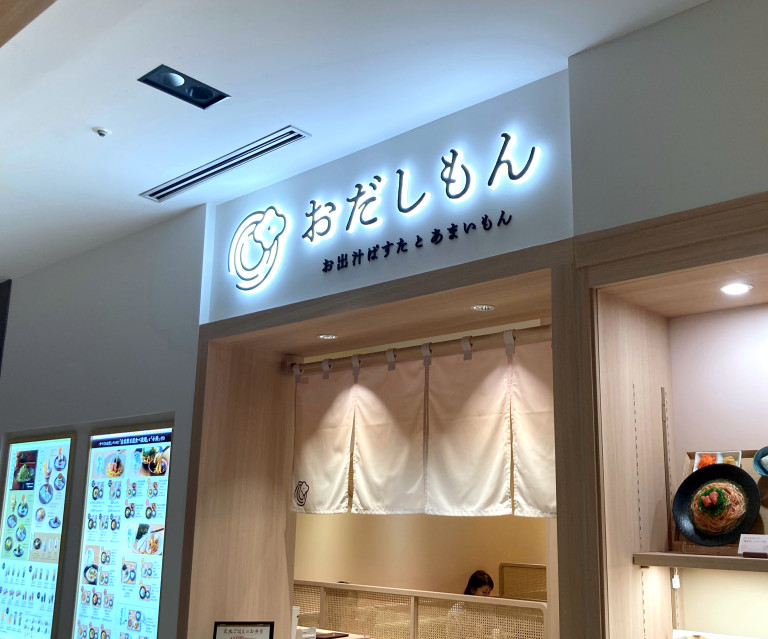
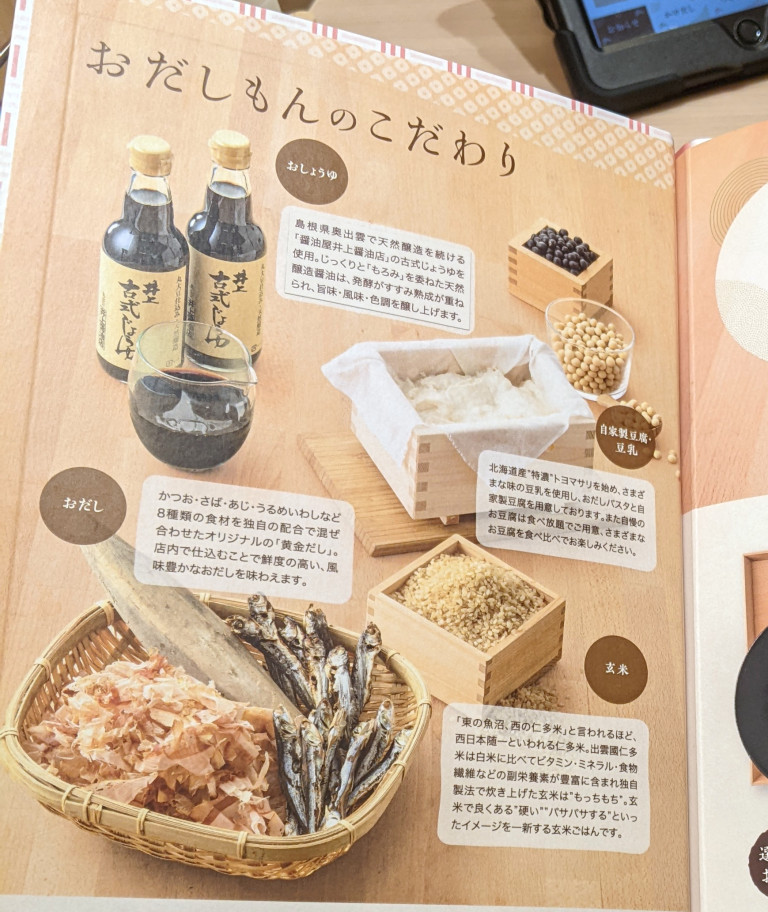

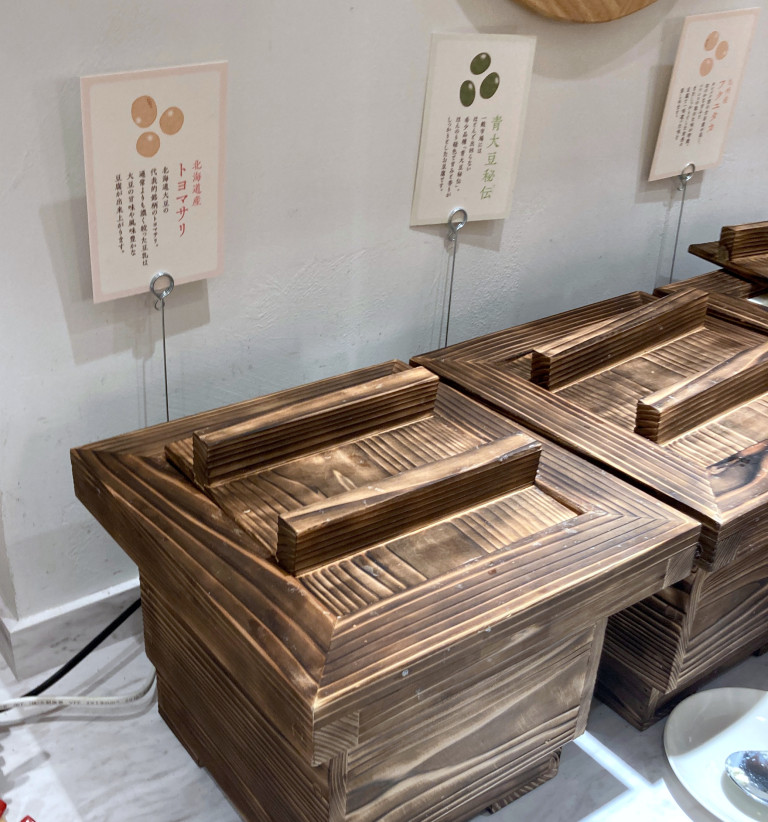
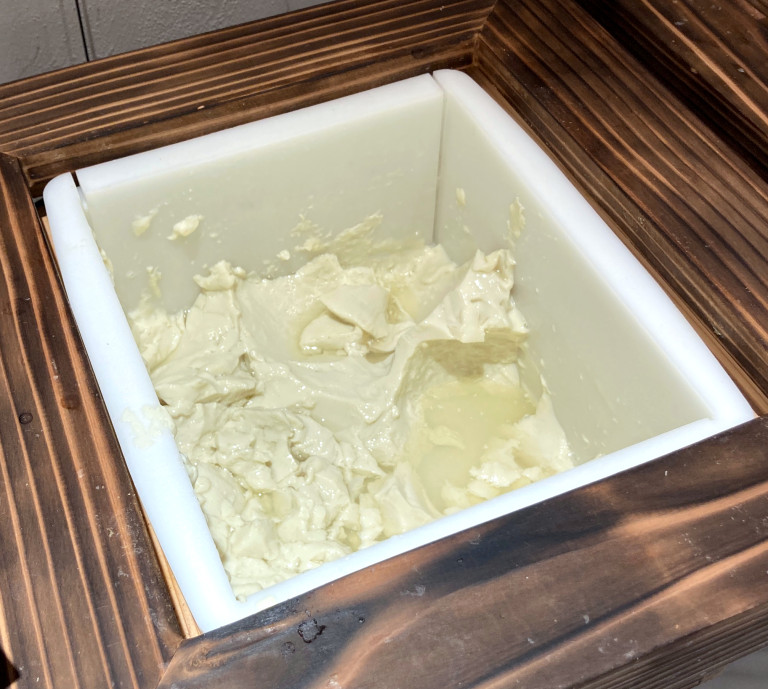
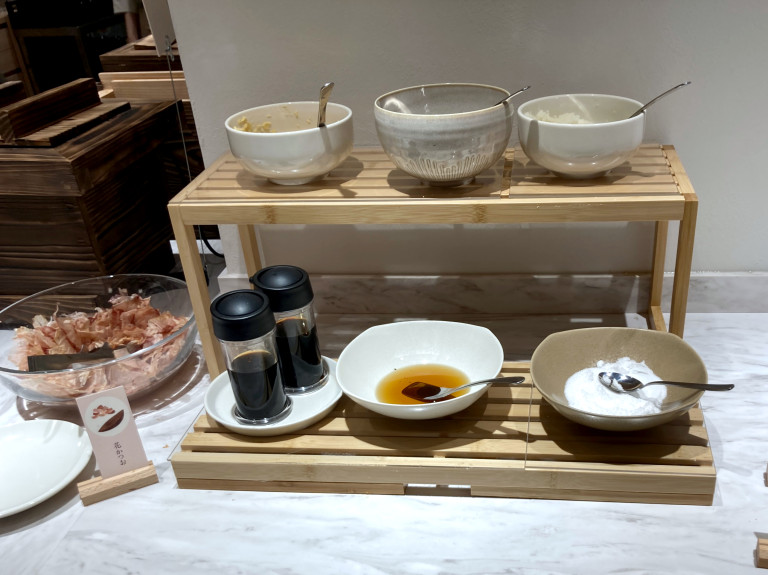
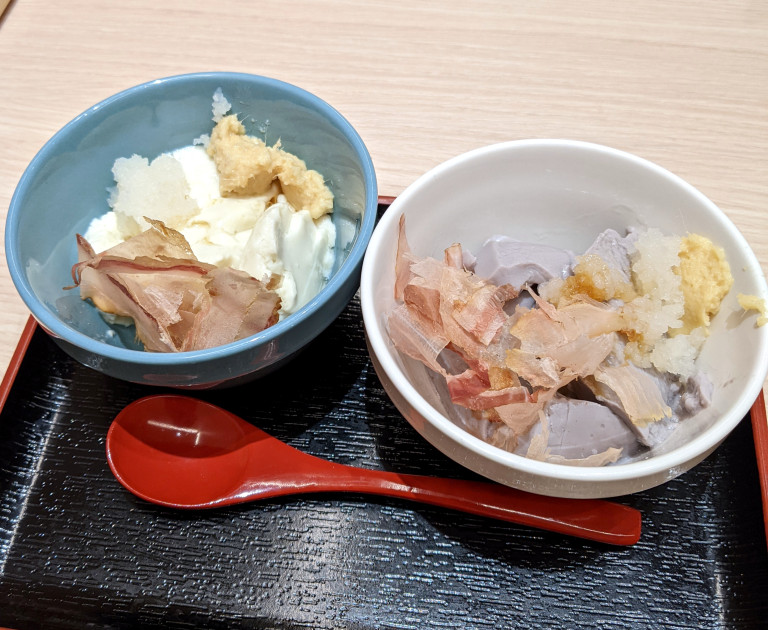

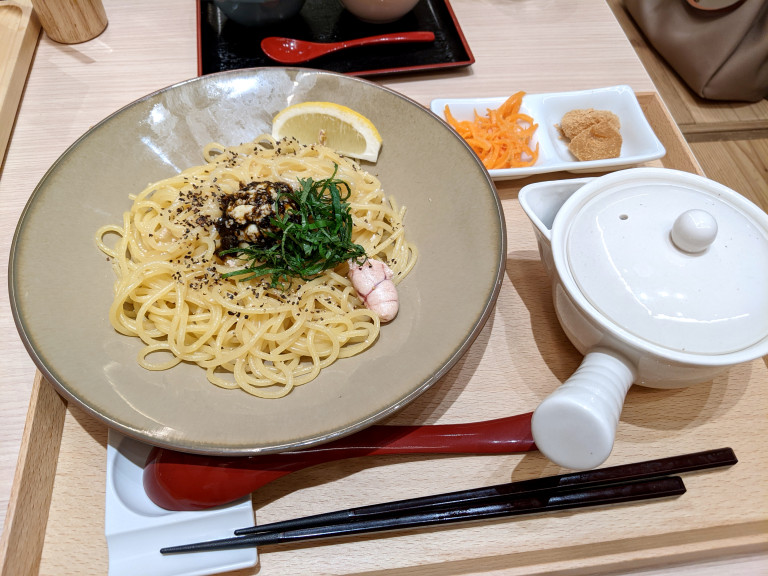
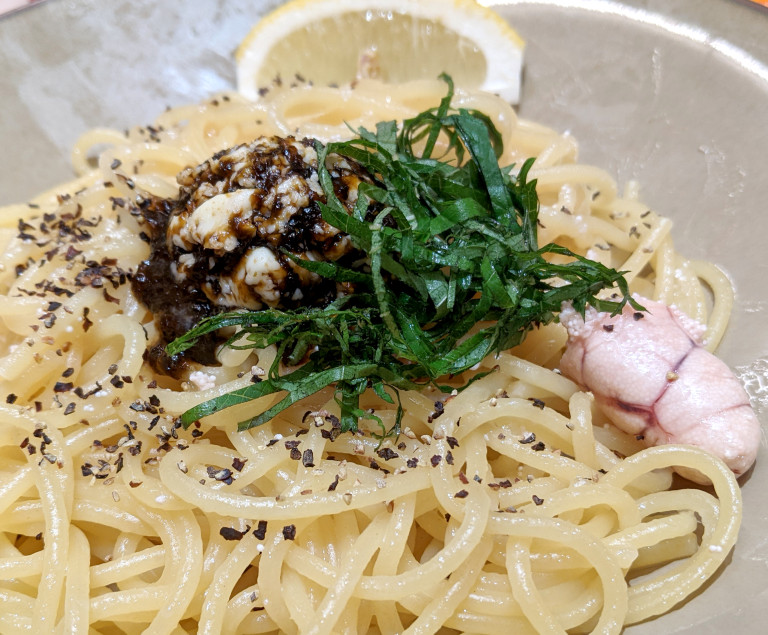
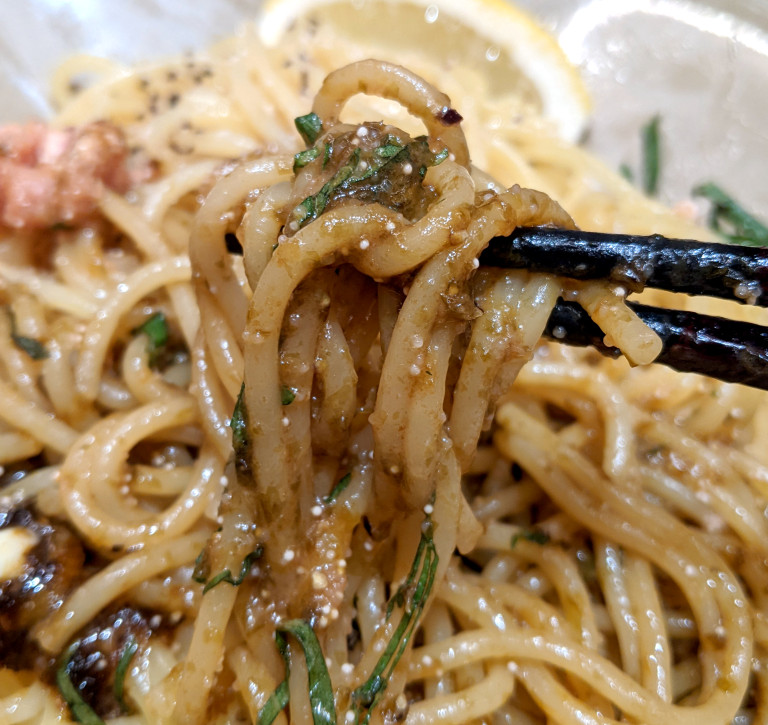
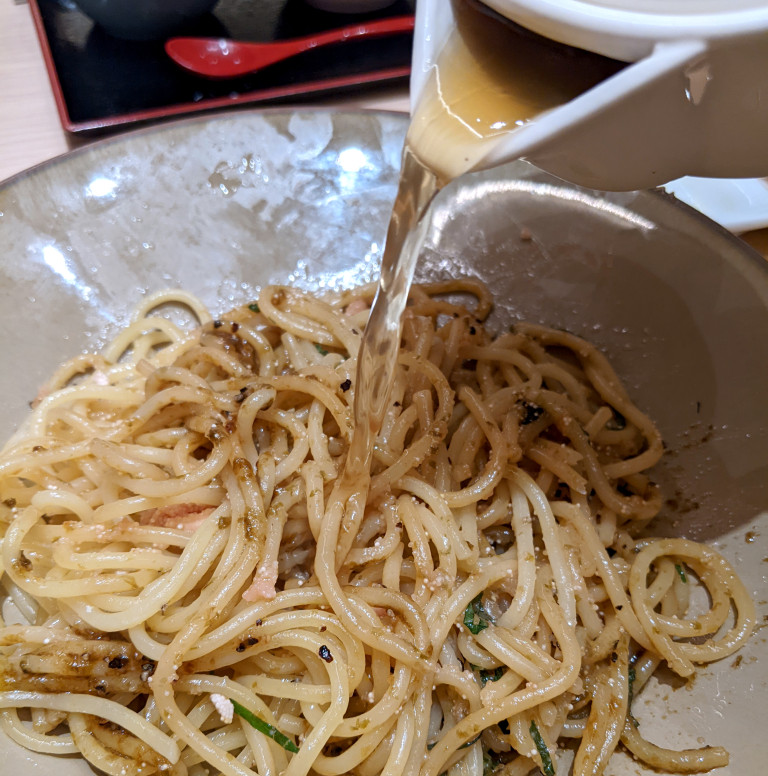
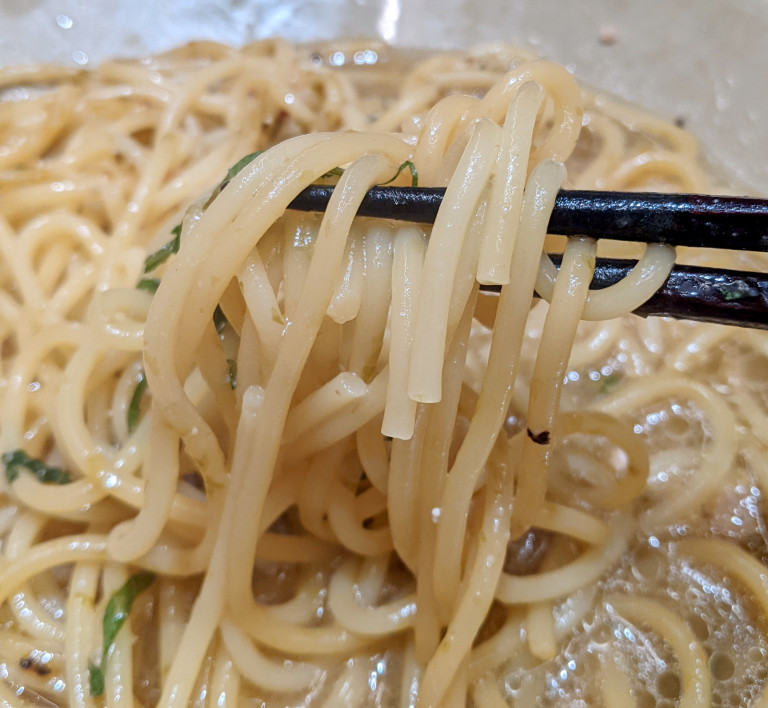
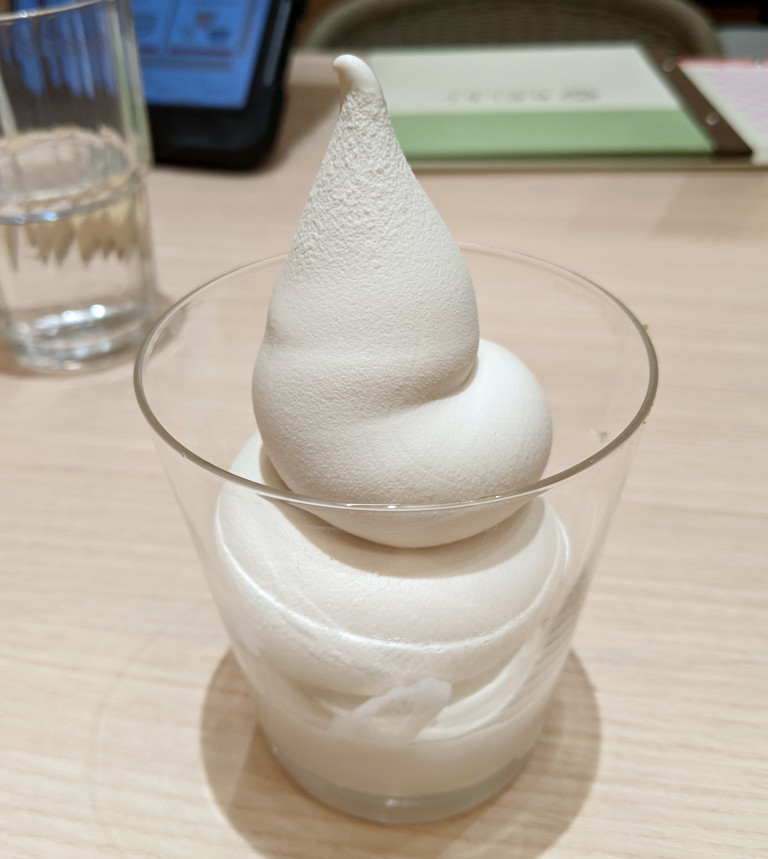
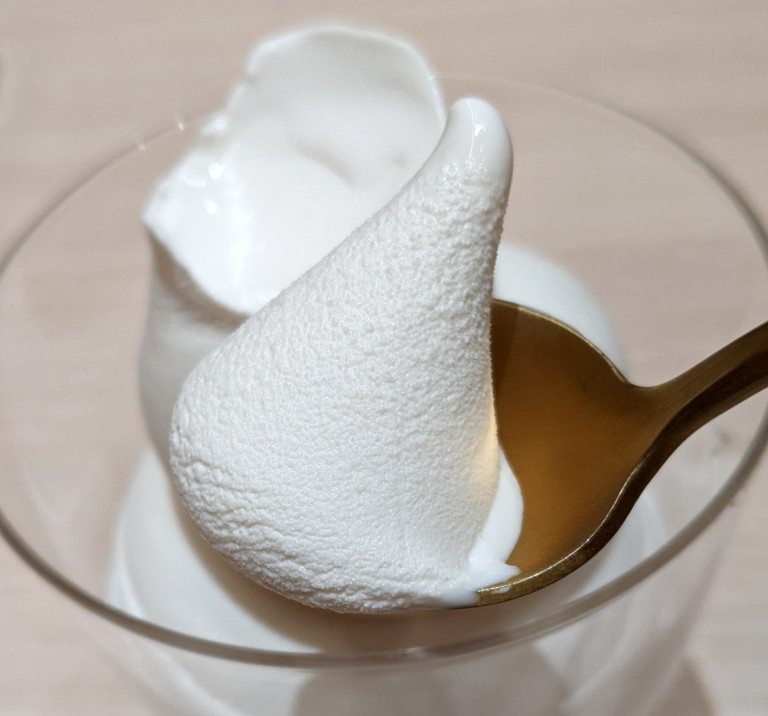
 Tokyo’s spicy cod roe ice cream: An unexpected dessert that tastes about like what you’d expect
Tokyo’s spicy cod roe ice cream: An unexpected dessert that tastes about like what you’d expect Popcorn shrimp udon, as in noodles with popcorn and shrimp, now on the menu in Tokyo【Taste test】
Popcorn shrimp udon, as in noodles with popcorn and shrimp, now on the menu in Tokyo【Taste test】 We ate all eight kinds of cold noodles from 7-Eleven and here’s our favourites【Taste test】
We ate all eight kinds of cold noodles from 7-Eleven and here’s our favourites【Taste test】 We find Italian Soba at an Aomori fish market that insisted it’s perfect for the beach
We find Italian Soba at an Aomori fish market that insisted it’s perfect for the beach Mr. Sato eats a Japanese sweet potato brulée so good that it just about knocks his socks off
Mr. Sato eats a Japanese sweet potato brulée so good that it just about knocks his socks off Foreigner’s request for help in Tokyo makes us sad for the state of society
Foreigner’s request for help in Tokyo makes us sad for the state of society Seaside scenery, history, and so many desserts on Yokohama’s Akai Kutsu【Japan Loop Buses】
Seaside scenery, history, and so many desserts on Yokohama’s Akai Kutsu【Japan Loop Buses】 Japanese-style accommodation at the new Premium Dormy Inn hotel in Asakusa will blow your mind
Japanese-style accommodation at the new Premium Dormy Inn hotel in Asakusa will blow your mind Should you add tartar sauce to Japanese curry rice? CoCo Ichi makes diners an unusual offer
Should you add tartar sauce to Japanese curry rice? CoCo Ichi makes diners an unusual offer There’s a samurai-era village for you to walk through at this awesome overlooked museum in Japan
There’s a samurai-era village for you to walk through at this awesome overlooked museum in Japan “Deflowering” services for virgin women are now a thing in Japan, apparently
“Deflowering” services for virgin women are now a thing in Japan, apparently Mikado Coffee is a 76-year-old coffee chain with a major celebrity connection
Mikado Coffee is a 76-year-old coffee chain with a major celebrity connection Ryuk from Death Note performs Pen-Pineapple-Apple-Pen in official release video
Ryuk from Death Note performs Pen-Pineapple-Apple-Pen in official release video Anime girl English teacher Ellen-sensei becomes VTuber/VVTUber and NFT
Anime girl English teacher Ellen-sensei becomes VTuber/VVTUber and NFT It’s naked time: An American’s first onsen experience 【Video】
It’s naked time: An American’s first onsen experience 【Video】 McDonald’s new Happy Meals offer up cute and practical Sanrio lifestyle goods
McDonald’s new Happy Meals offer up cute and practical Sanrio lifestyle goods Japanese ramen restaurants under pressure from new yen banknotes
Japanese ramen restaurants under pressure from new yen banknotes French Fries Bread in Tokyo’s Shibuya becomes a hit on social media
French Fries Bread in Tokyo’s Shibuya becomes a hit on social media Red light district sushi restaurant in Tokyo shows us just how wrong we were about it
Red light district sushi restaurant in Tokyo shows us just how wrong we were about it New private rooms on Tokaido Shinkansen change the way we travel from Tokyo to Kyoto
New private rooms on Tokaido Shinkansen change the way we travel from Tokyo to Kyoto Tokyo Tsukiji fish market site to be redeveloped with 50,000-seat stadium, hotel, shopping center
Tokyo Tsukiji fish market site to be redeveloped with 50,000-seat stadium, hotel, shopping center Japanese city loses residents’ personal data, which was on paper being transported on a windy day
Japanese city loses residents’ personal data, which was on paper being transported on a windy day Beautiful Ghibli sealing wax kits let you create accessories and elegant letter decorations【Pics】
Beautiful Ghibli sealing wax kits let you create accessories and elegant letter decorations【Pics】 Secret Kitchen bento serves Japanese flowers, birds, wind and moon in a box, but is it worth it?
Secret Kitchen bento serves Japanese flowers, birds, wind and moon in a box, but is it worth it? New definition of “Japanese whiskey” goes into effect to prevent fakes from fooling overseas buyers
New definition of “Japanese whiskey” goes into effect to prevent fakes from fooling overseas buyers Our Japanese reporter visits Costco in the U.S., finds super American and very Japanese things
Our Japanese reporter visits Costco in the U.S., finds super American and very Japanese things Studio Ghibli releases Kiki’s Delivery Service chocolate cake pouches in Japan
Studio Ghibli releases Kiki’s Delivery Service chocolate cake pouches in Japan All-you-can-drink Starbucks and amazing views part of Tokyo’s new 170 meter-high sky lounge
All-you-can-drink Starbucks and amazing views part of Tokyo’s new 170 meter-high sky lounge More foreign tourists than ever before in history visited Japan last month
More foreign tourists than ever before in history visited Japan last month New Pokémon cakes let you eat your way through Pikachu and all the Eevee evolutions
New Pokémon cakes let you eat your way through Pikachu and all the Eevee evolutions Disney princesses get official manga makeovers for Manga Princess Cafe opening in Tokyo
Disney princesses get official manga makeovers for Manga Princess Cafe opening in Tokyo Sales of Japan’s most convenient train ticket/shopping payment cards suspended indefinitely
Sales of Japan’s most convenient train ticket/shopping payment cards suspended indefinitely Sold-out Studio Ghibli desktop humidifiers are back so Totoro can help you through the dry season
Sold-out Studio Ghibli desktop humidifiers are back so Totoro can help you through the dry season Japanese government to make first change to romanization spelling rules since the 1950s
Japanese government to make first change to romanization spelling rules since the 1950s Ghibli founders Toshio Suzuki and Hayao Miyazaki contribute to Japanese whisky Totoro label design
Ghibli founders Toshio Suzuki and Hayao Miyazaki contribute to Japanese whisky Totoro label design Doraemon found buried at sea as scene from 1993 anime becomes real life【Photos】
Doraemon found buried at sea as scene from 1993 anime becomes real life【Photos】 Tokyo’s most famous Starbucks is closed
Tokyo’s most famous Starbucks is closed One Piece characters’ nationalities revealed, but fans have mixed opinions
One Piece characters’ nationalities revealed, but fans have mixed opinions We asked a Uniqlo employee what four things we should buy and their suggestions didn’t disappoint
We asked a Uniqlo employee what four things we should buy and their suggestions didn’t disappoint 2,500 yen for Tokyo ramen? High-end noodles in the high-rent Ginza district are totally worth it
2,500 yen for Tokyo ramen? High-end noodles in the high-rent Ginza district are totally worth it We visit Tokyo’s new all-plant-based cafe “Komeda Is □”
We visit Tokyo’s new all-plant-based cafe “Komeda Is □” Reserve a spot at Michelin award-winning Waranokura for an unforgettable udon experience
Reserve a spot at Michelin award-winning Waranokura for an unforgettable udon experience Japanese convenience store pasta called “a monstrosity” by foreigners online
Japanese convenience store pasta called “a monstrosity” by foreigners online One minute is all you need to make this popular instant noodle meal from Okayama【SoraKitchen】
One minute is all you need to make this popular instant noodle meal from Okayama【SoraKitchen】 Can a plant-based restaurant serving Buddhist meals turn meat-loving Mr. Sato into a vegetarian?
Can a plant-based restaurant serving Buddhist meals turn meat-loving Mr. Sato into a vegetarian? We eat an Italian-inspired lobster curry…at a cheap curry chain!
We eat an Italian-inspired lobster curry…at a cheap curry chain! Around Japan in 47 rice balls: Mr. Sato buys each prefecture’s musubi all from one Tokyo shop
Around Japan in 47 rice balls: Mr. Sato buys each prefecture’s musubi all from one Tokyo shop Which Japanese conveyer belt sushi chain has the best steamed egg custard? 【Taste test】
Which Japanese conveyer belt sushi chain has the best steamed egg custard? 【Taste test】 Our writer Meg gets a taste of Kiri Cafe, a cream cheese-lover’s paradise!
Our writer Meg gets a taste of Kiri Cafe, a cream cheese-lover’s paradise! Craving ramen, but can’t find decent noodles? Transform your spaghetti with this pasta hack!
Craving ramen, but can’t find decent noodles? Transform your spaghetti with this pasta hack! Is that restaurant in Tokyo with the giant mecha crab sign any good?
Is that restaurant in Tokyo with the giant mecha crab sign any good? Super Budget Dining in Japan – What’s the best way to spend 1,000 yen (US$6.70) at Saizeriya?
Super Budget Dining in Japan – What’s the best way to spend 1,000 yen (US$6.70) at Saizeriya? Japanese pasta dish ranked 24th worst food in the world, but does it deserve that dishonor?
Japanese pasta dish ranked 24th worst food in the world, but does it deserve that dishonor? Douhua, a delicious tofu pudding, is Mr. Sato’s new favourite food
Douhua, a delicious tofu pudding, is Mr. Sato’s new favourite food
Leave a Reply